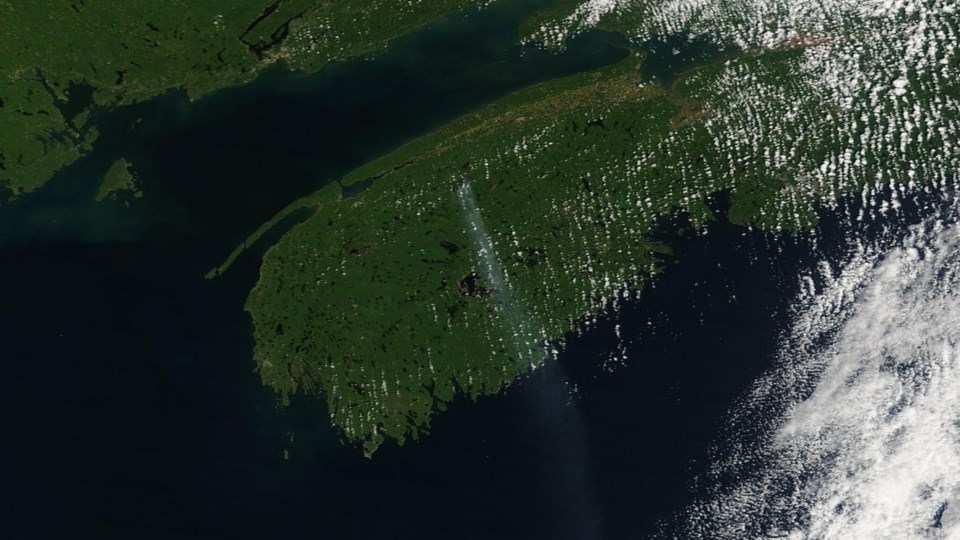WEST DALHOUSIE — The largest wildfire in Nova Scotia continued to burn out of control in the Annapolis Valley on Tuesday, though firefighters kept the blaze from growing overnight.
Scott Tingley with the Natural Resources Department said the Long Lake wildfire in the western part of the province is composed of a series of fires that together cover roughly 32 square kilometres of land.
Tingley told a media briefing that firefighters are focusing efforts on the northern side of the wildfire that is closest to homes near West Dalhousie, where about 100 homes were evacuated after officials declared a state of emergency on Saturday. He did not say how many homes are threatened by fire.
"The fire did cross the West Dalhousie Road … so there are structures and homes in the immediate vicinity, and structure protection equipment and tactics are remaining in place," Tingley said.
Crews with the Department of Emergency Management have been setting up sprinklers near houses while firefighters continue with suppression efforts, he said.
Staff have been closely watching the weather forecast and movement of Hurricane Erin, Tingley said, which is expected to bring easterly winds and a "drier air mass" to the region.
"We do anticipate that there could be a couple of challenging days in between now and likely Saturday and Sunday as things dry out, continue to dry out through the week, winds shift and increase," he said.
Officials say there are 22 firefighters from Ontario, five from P.E.I. and 25 volunteer firefighters from Nova Scotia working alongside the Department of Natural Resource's 93 firefighters on the Long Lake fire. They are using aircraft including a water skimmer, which flies low and collects water from lakes to dump on the fire, Tingley said.
Meanwhile, officials in Newfoundland and Labrador say the largest wildfire in the province has destroyed more than 200 structures including homes, a school and a post office. In a news conference Tuesday, Premier John Hogan said 203 structures with power meters have been lost to the fire that began more than two weeks ago near Kingston.
Any building with a power meter, from sheds to businesses, are included in the tally, he said.
Buildings have been destroyed in about five towns along a 15-kilometre stretch of highway on the northwestern shore of Conception Bay.
“Even though these are the numbers we have to date, there is a chance there could be additional losses in these communities,” Hogan said in St. John’s.
“There might be a side road that we haven't got to yet, there might still be some clarification that needs to be done.”
Officials say the Kingston fire encompasses about 107 square kilometres — roughly the size of the city of Paris, France. It is still burning out of control but improving weather conditions are helping the fight to get the blaze contained, Hogan said.
In New Brunswick, the provincial government announced Tuesday that some businesses that had been barred from operating on Crown land because of the wildfire risk will be allowed to resume "under strict conditions."
The province was battling four out-of-control fires as of Tuesday afternoon.
This report by The Canadian Press was first published Aug. 19, 2025.
— By Lyndsay Armstrong in Halifax, with files from Sarah Smellie in St. John's, N.L.
The Canadian Press




